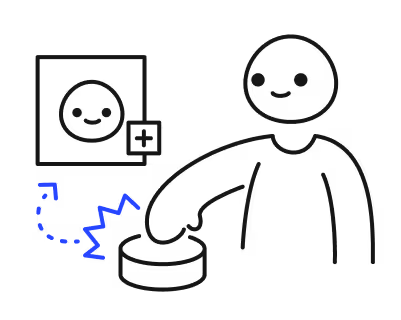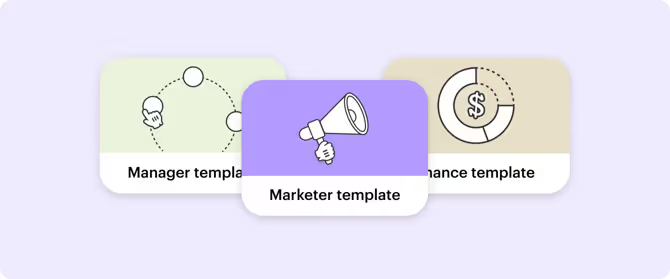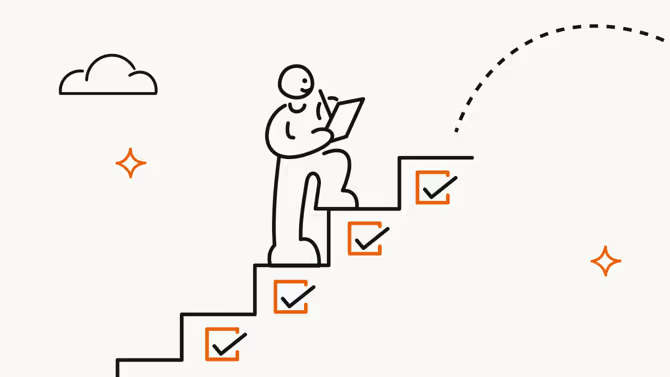The first 90 days: Proven strategies to accelerate new hire productivity

Streamline, organize, and automate your onboarding process like magic.

A strong onboarding can increase employee time-to-productivity by a staggering 70% (and retention by 82%). So, what constitutes a mighty onboarding? And how do you know if your company has one?
In this article, we explore a 3-step strategy that ensures those crucial first 90 days set your new hires — and your organization — up for success.
Why an organized onboarding is so important
The first 90 days of employment are pivotal for new hires, setting the stage for their future at your company. A well-structured onboarding program does more than ramp up productivity — it also instills a strong sense of loyalty and belonging. This period is critical because it significantly influences job satisfaction and employee performance metrics while concurrently lowering turnover rates.
The Society for Human Resource Management (SHRM) notes that 54% of businesses observe a boost in employee engagement with a solid onboarding strategy in place. And organizations with structured onboarding programs enjoy a 60% year-over-year improvement in revenue per full-time employee and a 63 percent year-over-year improvement in customer satisfaction.
{emphasize}
Having a structured onboarding program leads to
77%
of new hires hitting their first performance milestone
54%
boost to employee engagement
60%
YoY improvement in revenue
{emphasize}
Remember: onboarding isn't just for new hires. This process is equally crucial for employees transitioning to new roles within the company (cross-boarding) or returning from an extended leave. Adapting these onboarding strategies to fit various employee scenarios can further enhance their effectiveness and ensure all team members successfully integrate into their new roles.
Step 1: Preboarding
Why preboarding is mission-critical
To have a well-oiled onboarding program, you can't overlook preboarding. Preboarding is a crucial phase of the employee onboarding process that occurs after a new hire has accepted their job offer but before their official start date. It serves as a bridge between the hiring process and the formal onboarding program, helping keep new hires enthusiastic, informed, and ready to contribute from their very first day on the job. And it pays off, 83% of high-performing organizations begin onboarding before the new hire's first day.
Preboarding enhances employee engagement. By initiating contact before a new hire's first day, companies demonstrate that they value their new employees, which can boost excitement and commitment. This early engagement establishes a positive tone and shows the organization's proactive approach to making sure the new hire feels welcomed.
It can also reduce anxiety for new hires. Knowing what to expect on the first day, understanding the company culture, and having a clear picture of their role and responsibilities can help mitigate the nervousness that often accompanies starting a new job. This clarity and preparation make the transition smoother and less daunting.
Unsurprisingly, preboarding also leads to faster productivity. When new hires are familiar with the company's tools, processes, and expectations from the get-go, they can hit the ground running. This familiarity allows them to contribute more effectively and quickly, reducing the usual ramp-up time needed to reach full productivity.
Lastly, a well-executed preboarding experience can lead to improved retention rates. The initial interactions and preparations during preboarding help build a foundation of job satisfaction and commitment to the company, which are crucial in retaining talent. When employees feel prepared and valued from the start, they are more likely to stay with the company long-term.
How to actively engage your new hires (and your team) before day one
Key components of preboarding include:
- Communication: Regular, personalized communication, such as welcome emails and updates about the company, helps keep new hires engaged.
- Documentation: Providing necessary forms and documents beforehand can streamline the administrative process, allowing the first day to focus more on integration and less on paperwork.
- Access to tools: Granting access to company systems, email, and other tools early can help new hires familiarize themselves with essential technology and platforms.
- Introduction to team and culture: Sharing information about team structures, company culture, and values can help new hires feel connected and understand their new work environment.
- Training materials: Offering initial training materials or resources can help new hires learn about their roles and responsibilities ahead of time.
{emphasize}📝 Follow this employee preboarding checklist to plan the welcome and bring your newcomer up to speed. {emphasize}
While the new hire is the focus of this process, remember to prepare your team(s) for their arrival as well. Before your newcomer joins, consider holding a team meeting with your employees to address any questions they have about their new colleague's position and how it will affect their own roles and responsibilities. Alternatively, if a group setting doesn't fit your scenario, consider adding it as a talking point in your next one-on-one meeting with your employees.
Step 2: Mentorship
Double the value: Assigning mentors or buddies to newcomers
Assigning a mentor or buddy to a new hire is an absolute must. Doing so enriches the onboarding process for everyone involved: new hire, mentor, and your organization. No wonder high-performing organizations are 2.5x more likely to assign a mentor or coach during the onboarding process.
Mentorship in onboarding:
- Accelerates the learning curve: Mentors and buddies can provide one-on-one guidance, helping new hires understand their roles and responsibilities faster and more effectively.
- Enhances social integration: A mentor or buddy acts as a social anchor, introducing new hires to team members and helping them navigate the organization's social dynamics.
- Increased confidence: Regular support and feedback from an experienced colleague can boost a new hire's confidence in their skills and role within the company.
- Higher job satisfaction and retention: Having a reliable point of contact for questions and concerns can improve job satisfaction. This support can significantly reduce feelings of isolation and the likelihood of early turnover.
- Channels culture: Mentors and buddies are culture carriers, imparting company values, expectations, and norms to new hires in a more personal and relatable way.
Choosing the right partnership is clutch. Take some time to think about the fit during preboarding, referring to these tips to help guide you in creating the best experience possible:
{emphasize}
Checklist for selecting and pairing mentors for new hires
- Align on goals and values: Make sure that the mentor or buddy shares the company's values and understands the mentorship program's goals. This alignment helps transmit the right message and culture to the new hire.
- Consider personality and communication styles: Match mentors and buddies with new hires based on compatible personalities and communication styles. This compatibility can make the relationship more productive and enjoyable for both parties.
- Experience and expertise: Choose mentors with a proven track record in their roles and possess the skills and knowledge the new hire needs to learn. This relevance ensures that the mentor is well-equipped to guide the new employee.
- Training for mentors/buddies: Provide training to mentors and buddies on how to effectively support new hires. This training should cover communication skills, confidentiality, and how to provide constructive feedback.
- Regular check-ins: Establish a system for regular check-ins between the mentor or buddy and the new hire and between the mentor and manager or HR. This system helps monitor progress, solve issues, and adjust the pairing if necessary.
- Feedback loop: Create a feedback loop where new hires can provide their input on the mentorship experience. This feedback is crucial for improving the program and making necessary adjustments.
{emphasize}
Step 3: The onboarding plan
How to structure onboarding plans
Once you've lined up all your preboarding activities, it's time to get to the employee's first day and beyond. A structured onboarding plan should encompass orientation, training sessions, and goal setting to guide new hires through their initial months.
Orientation
Orientation is often the new hire's first formal experience within the organization. This includes:
- Introduction to the company's history, culture, and values
- Overview of organizational structure and key personnel
- Administrative setup, such as HR documentation and IT accounts
Training
Training brings new hires up to speed in their specific roles and the tools they will be using. Practical training sessions might include:
- Role-specific training to understand job responsibilities
- Technology training on company software and tools
- Compliance and security training relevant to the industry and job
Goal setting
Set clear, achievable goals to help new hires focus and understand what is expected of them. Goals should be:
- Specific, Measurable, Achievable, Relevant, and Time-bound (SMART)
- Aligned with team and organizational objectives
- Discussed and agreed upon with their manager or mentor
{emphasize}Learn more about how to set onboarding goals (and why they're so essential). {emphasize}
Feedback and evaluation
Regular feedback sessions are crucial to ensure the newcome integrates well and addresses any concerns they might have. This could involve:
- Weekly or bi-weekly check-ins with a manager or mentor
- Formal reviews at 30, 60, and 90 days
- Integrating into the performance management system, setting expectations for their roles and the metrics by which they will be evaluated
Team integration
Planned activities that help new hires build relationships with colleagues can be very beneficial. These might include:
- Team lunches or social events
- Collaborative projects to foster team interaction
- Introduction meetings with key team members across the department
A well-rounded onboarding plan that covers these components ensures that new hires are well-prepared to begin working and more likely to be engaged and stick with your company for the long run. Each element of the plan should be tailored to fit the specific needs of your organization and the individuals being onboarded.
{emphasize}📝 Get planning: Share this simple employee onboarding template with your team leaders. It includes a checklist and sample activities to help them map out preboarding through to the 1-year mark. {emphasize}
Enhancing employee onboarding (and saving HR time) with AI
Much like every other facet of business, Artificial Intelligence (AI) is revolutionizing the way companies onboard new employees. How? By automating and personalizing the process.
Manual data input and paperwork required in onboarding cause wasted time and productivity and risk errors.
AI can analyze large sets of data to tailor onboarding experiences to individual needs, track progress, and predict potential challenges before they arise. Your organization may wish to incorporate AI into its employee onboarding process to help teams save time with tasks, including:
- Automate administrative, often tedious activities like processing paperwork
- Personalize learning experiences based on job role or learning style
- Provide real-time answers to new hire questions via AI-driven chatbots
Take Workleap's AI Onboarding Wizard, for example. With a simple drag-and-drop, you can transform your old PDF, Word, or Excel onboarding documents into beautiful and engaging digital onboarding experiences. Think of the time your HR team can regain and redirect toward strategic planning. Everyone can benefit from a lighter load.

While it's exciting to embrace AI to refine and enhance your onboarding process, it's also important to keep ethical standards front and center. Explore our detailed one-pager, Ethical AI in Recruitment & Onboarding, to discover key practices for responsibly integrating AI in recruitment and onboarding. This guide will help make sure that your AI implementations not only boost efficiency but also uphold fairness and transparency across your HR operations.
Workleap: Your strategic partner for streamlined onboarding
As the demands on your HR team continue to expand, aligning with a partner that understands the nuances of effective onboarding can dramatically lighten your team's workload and elevate their success. Workleap stands out, offering tailored solutions that streamline the onboarding process and enhance new hire experiences.
Consider the experience of Lexop, a fintech startup that restructured and scaled its onboarding processes with Workleap's help. The result was not just more efficient procedures but a remarkable increase in new hire satisfaction — soaring from 72% to an impressive 98% within three months. This success story illustrates how Workleap's simple, focused approach can turn the crucial first days of a new hire into a strategic advantage for your organization.

{emphasize}
Ready to see the results in your organization? Request a demo now and see firsthand how our platform can transform the first 90 days for your new hires.
{emphasize}
%20(1).png)

%20(1).avif)


.avif)
.avif)








